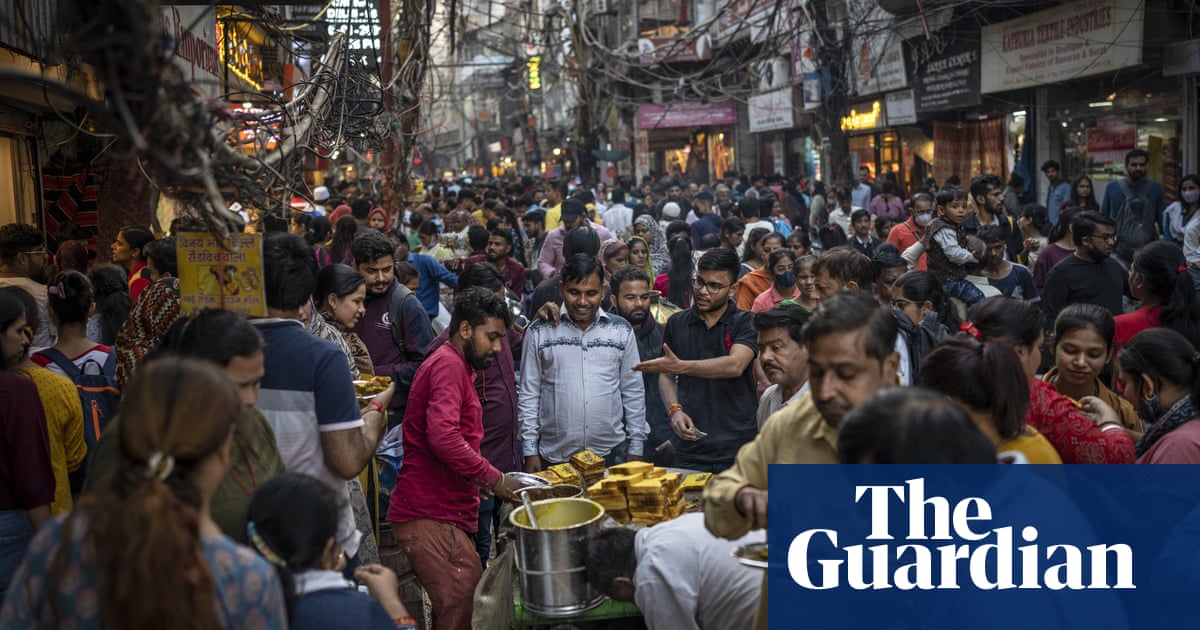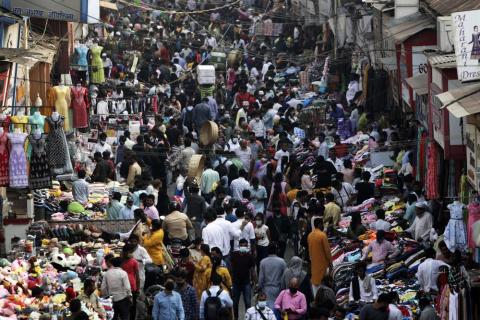
India has overtaken China as the world’s most populous country, according to UN population estimates, the most significant shift in global demographics since records began.
According to the UN’s projections, which are calculated through a variety of factors including census data and birth and death rates, India now has a population of 1,425,775,850, surpassing China for the first time.
It is also the first time since 1950, when the UN first began keeping global population records, that China has been knocked off the top spot.
China’s population decline follows decades of strict laws to bring the country’s booming birthrate under control, including the introduction of a one-child policy in the 1980s. This included fines for having extra children, forced abortions and sterilisations. While initially highly effective in controlling the population, these policies became a victim of their own success, and the country is now grappling with an ageing population in steep decline, which could have severe economic implications.
Part of the problem is that because of a traditional preference for boys, the one-child policy led to a massive gender imbalance. Men now outnumber women by about 32 million. “How can the country now shore up birth rates, with millions of missing women?” asks Mei Fong, the author of One Child, a book about the impact of the policy.
Recent policies introduced in China trying to incentivise women to have more children have done little to stimulate population growth. Women still have only 1.2 children and the population is expected to fall by almost 10% in the next two decades. According to projections, the size of the Chinese population could drop below 1 billion before the end of the century.
In India, the population has grown by more than a billion since 1950. Though growth has now slowed, the number of people in the country is still expected to continue to rise for the next few decades, hitting its peak of 1.7 billion by 2064. Today on average 86,000 babies are born a day in India compared with just 49,400 in China.
Poonam Muttreja, executive director of Population Foundation of India, said that while some were concerned at the implications of being the world’s most populous country, she said that India’s population growth was no longer facing the “explosion” many had feared.
“Earlier projections said we would overtake China in 2027 so it’s happened four years faster, mostly because of our young population,” said Muttreja. “But at the same time, we have also reduced our population growth and reached population stabilisation faster than we had imagined and it will continue to slow down as long as we stay on the right track. So I don’t think there’s any need for alarm.”
The exact size of India’s population is still not known, due to a delay in the government carrying out the census, which usually takes place every decade. It was due in 2021, but was postponed due to the Covid-19 pandemic, and the government, led by prime minister Narendra Modi, has yet to announce the date it will commence.
Some have accused the Modi government of obstructing the census process in order to disguise data that could be politically disadvantageous. However, the government say the delay is due to an ongoing effort to incorporate technology into the process.
The announcement by the UN is likely to increase pressure on the Indian government to carry out the survey. According to predictions the population has grown by almost 200 million – greater than the population of Brazil – since the last census in 2011 and experts say the lack of vital data is hindering policymaking and welfare programmes.
India’s demography is far from uniform across the country. One third of predicted population growth over the next decade will come from just two states, Bihar and Uttar Pradesh, in the north of the country, which are some of India’s poorest and most agricultural states. Uttar Pradesh alone already has a population of about 235 million, bigger than Nigeria or Brazil.
Meanwhile states in India’s south, which is more prosperous and has far higher rates of literacy, population rates have already stabilised and have begun to fall. In the next decade, states in the southern states such as Kerala and Tamil Nadu are likely to start grappling with an ageing population, and by 2025, one in five people in Kerala will be over 60.
The divide in population growth between India’s north and south could also have political implications. After 2026, India’s electoral lines are due to be revised and redrawn based on census data, in particular relating to the number of people in constituencies.
Many politicians in southern states have expressed concern that their successes in bringing down population numbers, through education programmes, family planning and high literacy, could result in a reduction in their political representation in parliament, and a further political domination of the northern states that continue to have a population boom.
Currently the average age in India is just 29, and the country will continue to have a largely youthful population for the next two decades. A similar “demographic dividend” proved highly useful in China, leading to an economic boom, particularly in manufacturing.
While India has one of the world’s fastest-growing economies in the world, and recently overtook the UK as the fifth-largest, experts have stressed that the country needs more investment in education and employment to seize the opportunity presented by a young population over the next few decades.
India continues to struggle with high youth unemployment and less than 50% of working-age Indians are in the workforce. The figure for women is even lower, with just 20% of women participating in the formal labour market, a figure that is decreasing as India develops.











